Mauritius |
|
|
|
| Übersicht – Contents: | |
Mauritius |
|
|
|
| Übersicht – Contents: | |
Flaggen – Flags: |
|
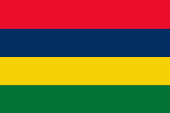 |
Nationalflagge – national flag, Seitenverhältnis – ratio = 2:3, Quelle/Source, nach/by: Flags of the World   |
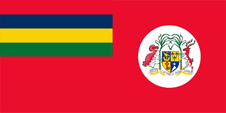 |
Handelsflagge – merchant flag, Seitenverhältnis – ratio = 1:2, Quelle/Source, nach/by: Flags of the World |
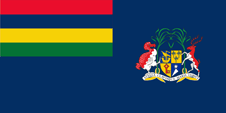 |
Flagge der Regierung (Staatsflagge) – flag of the government (state flag), Seitenverhältnis – ratio 1:2, Quelle/Source, nach/by: Flags of the World |
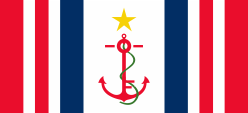 |
Flagge der Küstenwache – flag of the Coast Guard, Seitenverhältnis – ratio = 5:11, Quelle/Source, nach/by: Flags of the World |
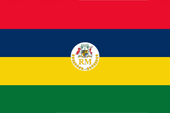 |
seit 1992, Flagge des Präsidenten – flag of the President, Seitenverhältnis – ratio = 2:3, Quelle/Source, nach/by: Flags of the World |
historische Flaggen – historical Flags: |
|
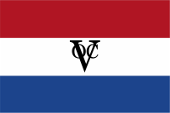 |
1660–1798, |
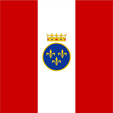 |
1715–1767, Flagge der Französischen Ostindienkompanie – flag of the French East India Company, Quelle/Source: Picaballo, CC BY-SA 3.0, via Wikimedia Commons |
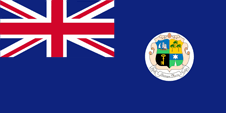 |
1869–1906, Flagge der Regierung (Staatsflagge) – flag of the government (state flag), Seitenverhältnis – ratio 1:2, Quelle/Source, nach/by: Flags of the World |
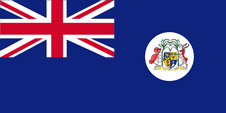 |
1906–1923, Flagge der Regierung (Staatsflagge) – flag of the government (state flag), Seitenverhältnis – ratio 1:2, Quelle/Source, nach/by: Flags of the World |
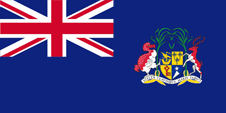 |
1923–1968, Flagge der Regierung (Staatsflagge) – flag of the government (state flag), Seitenverhältnis – ratio 1:2, Quelle/Source, nach/by: Flags of the World |
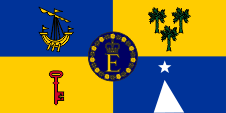 |
1968(?)–1992, Flagge der Königin – flag of the Queen, Seitenverhältnis – ratio 1:2, Quelle/Source, nach/by: Flags of the World |
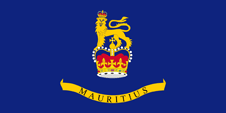 |
1968–1992, Flagge des Generalgouverneurs – flag of the Governor General, Seitenverhältnis – ratio 1:2, Quelle/Source, nach/by: Flags of the World |
| Die heutige Flagge von Mauritius am 12.03.1968 (nach anderen Quellen am 09.01.1968) erstmals offiziell gehisst. Sie zeigt vier waagerechte Streifen in Rot, Blau, Gelb und Grün. Das Rot steht für das Ringen um die Unabhängigkeit, Blau für das den Inselstaat umgebende Meer, Gelb für die Sonne und das goldene Licht der Unabhängigkeit und Grün für den fruchtbaren Boden und seine Vegetation. Die Farben wurden aus den Farben des Wappens abgeleitet. Die Flagge wurde vom College of Arms (Heroldsamt London) entworfen. Die Farben der Flagge sind im "Mauritius Standard Bureau" niedergelegt. Sie werden folgendermaßen angegeben: Rot = Pantone 185, Blau = Pantone 295, Gelb = Pantone 116, Grün = Pantone 356. | The
today's flag of Mauritius was hoisted for the first time on 12th of March in
1968 (by other sources on 9th of January in 1968). It shows four horizontal stripes in red, blue, yellow and green. Red stands for the struggle for independence, blue for the ocean around the island, yellow for the sun and the golden light of independence and green for the fruitful soil and its vegetation. The colours were borrowed from the colours of the coat of arms. The flag was designed by the College of Arms (Herald Office in London). The colours of the flag are laid down in the "Mauritius Standard Bureau". They are given as follows: Red = Pantone 185, Blue = Pantone 295, Yellow = Pantone 116, Green = Pantone 356. |
| Mauritius orientiert sich am britschen Ensign-System. Das weist auf die Verbindung zu Großbritannien hin. | Mauritius is orientated in the British Ensign-System. This points to the connexions to the United Kingdom. |
Großbritannien hatte
in Jahr 1864 ein Flaggensystem eingeführt, in dem:
|
The United Kingdom introduced a flag system in 1864 in which:
|
| Mauritius verwendet als Handelsflagge einen Red Ensign und als Staatsflagge einen Blue Ensign (anstelle des Union Jack mit der eigenen Nationalflagge in der Oberecke). | Mauritius uses a Red Ensign as merchant flag and a Blue Ensign as state flag (instead of the Union Jack with its own national flag in the upper corner). |
| Quelle/Source: Flaggen Wappen Hymnen, Die Welt der Flaggen, Wikipedia (EN), Volker Preuß | |
Wappen – Coat of Arms: |
|
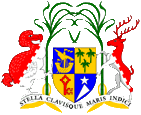 |
seit/since 1906, Wappen von Mauritius – Coat of arms of Mauritius, Quelle/Source: Corel Draw 4 |
|
|
|
| Das Staatswappen wurde am 25.08.1906 von König Eduard VII. verliehen. Im Schild ein Schiff, es steht für die Besiedlung von außerhalb, drei Palmen, sie stehen für die tropische Vegetation und die drei Dependenzen, ein Schlüssel und eine Spitze mit Stern, sie stehen für die strategische Lage des Landes, entsprechend dem Wappenspruch "Stella Clavisque Maris Indici" → "Stern und Schlüssel des Indischen Ozeans". Schildhalter sind ein Dodo (Dronte) und ein Samburhirsch mit Zuckerrohr. | The coat
of arms was awarded on the 25th of August in 1906 by King Edward VII. In the shield a vessel, it stands for the settlement from outside, tree palm trees, they stand for the tropical vegetation and the three dependencies, a key and a peak with a star, they stand for the strategic position of the country corresponding to the motto in the coat of arms: "Stella Clavisque Maris Indici" → "Star and Key of the Indian Ocean". Shield supporters are a Dodo (Dronte) and a Sambur Deer with sugarcane. |
| Quelle/Source: Flaggen Wappen Hymnen, Die Welt der Flaggen | |
Flugzeugkokarde – aircraft roundel: |
|
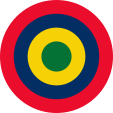 |
Flugzeugkokarde – aircraft roundel, Quelle/Source, nach/by: Wikipedia (EN) |
|
|
|
Landkarte – Map: |
Lage – Position: |
Landkarte des Landes – Map of the Country: |
|
|
| Zahlen und Fakten – Numbers and Facts: | |
|
|
|
|
|
|
|
|
|
|
|
|
|
|
|
|
|
|
|
|
| Altertum
· die Insel ist unbewohnt, Besuche von Phöniziern, Arabern und Malaien 1510 · Entdeckung durch den portugiesischen Seefahrer Pedro de Mascarenhas 1598 · die Niederlande besetzen und besiedeln die Insel und geben ihr den namen Mauritius 1638 · die Niederländer gründen eine Siedlung 1710 · die Niederlande geben die Insel auf 1715 · die Französische Ostindienkompanie nimmt die Insel in Besitz, Umbenennung in Île de France 1767 · Frankreich nimmt die Insel in Besitz 1810 · Besetzung durch britische Truppen 1814 · Frankreich tritt die Île de France offiziell an Großbritannien ab, die Insel wird als Mauritius britische Kronkolonie 1885 · Erste Verfassung ab 1834 · Masseneinwanderung von Arbeitskräften aus Indien 1958 · Großbritannien lockert die kolonialen Strukturen 1959 · erste freie Wahlen 07.07.1961 · Großbritannien gewährt Autonomie 1965 · Rassenunruhen 12.03.1968 · Unabhängigkeit im Rahmen des Commonwealth, Rassenunruhen 12.03.1992 · Verfassungsänderung, Mauritius wird Republik mit einem Präsidenten als Staatsoberhaupt, bleibt jedoch im Commonwealth 1999 · Rassenunruhen |
| antiquity
· the island is uninhabited, visits by Phoenicians, Arabs and Malays 1510 · discovery by the Portugese seafarer Pedro de Mascarenhas 1598 · the Netherlands occupy and populate the island and name it Mauritius 1638 · the Dutch establish a settlement 1710 · the Netherlands give the island up 1715 · French East India Company appropriates the island, renamed in Île de France 1767 · France appropriates the island 1810 · occupation by British troops 1814 · France cedes the Île de France officially to United Kingdom, the island becomes as Mauritius a British crown colony 1885 · first constitution since 1834 · mass-immigration of employees from India 1958 · United Kingdom relaxes the colonial structures 1959 · first free elections 7th of July 1961 · United Kingdom grants autonomy 1965 · race riots 12th of March 1968 · independence in the framework of the Commonwealth, race riots 12th of March 1992 · change of constitution, Mauritius becomes republic with a President as chief of state but remains in the Commonwealth 1999 · race riots |
| Quelle/Source: Atlas zur Geschichte, Wikipedia (D), Handbuch der geographischen Namen |
| Die Insel wurde bei der ersten europäischen Besiedlung durch die Niederländer von diesen nach Moritz (nied. Maurits) von Oranien-Nassau, dem damaligen Oberbefehlshaber der niederländischen Truppen benannt. | At the first European settlement by the Netherlanders the island was named by them after Moritz (Neth. Maurits) of Orania-Nassau, the then supreme commander of the Netherlands troops. |
| Quelle/Source: Handbuch der geographischen Namen | |